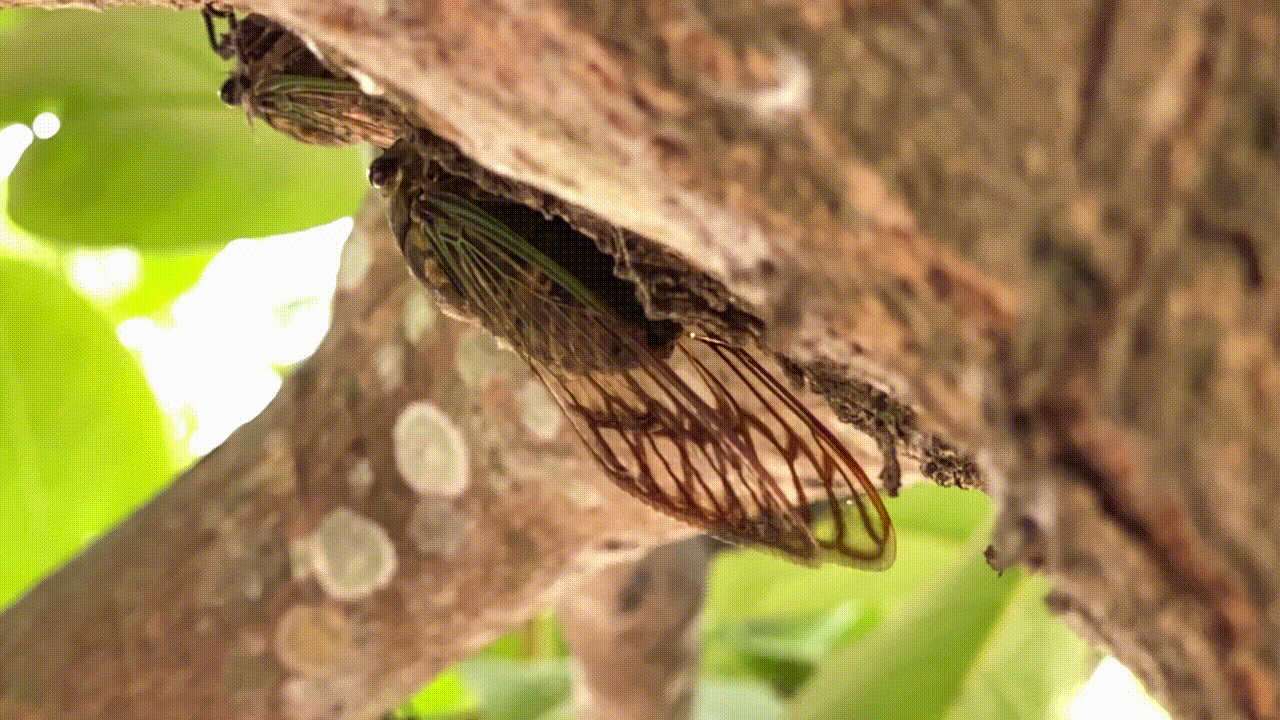Engineering
Why Is the Paris Olympics Running Track Purple?
The track incorporates recycled mussel and clam shells in a bid to help make the Summer Games the most sustainable yet
This Bronze Age Ship Replica, Made From Reeds and Goat Hair, Just Sailed 50 Nautical Miles
Researchers constructed the vessel using a list of materials found on a 4,000-year-old clay tablet
New Bionic Leg and Surgical Procedure Allow People to Walk With More Control After Amputations
The experimental surgery connects two muscles in the legs of people with below-the-knee amputations, allowing them to control a prosthetic limb with their brain
Researchers Make a Smiling Robotic Face From Living Skin
The team designed a new way for their lab-grown skin to adhere to the robot's face, in a creation that could help produce soft robots or train plastic surgeons
China Brings Samples From the Moon's Far Side to Earth in First-Ever Feat
The China National Space Administration retrieved more than four pounds of lunar soil samples, which scientists hope will shed light on the early history of Earth and the moon
Honeybees Can Sniff Out Lung Cancer, Scientists Suggest
New research opens the door for doctors to one day use bees as a living diagnostic tool
Starliner Astronauts Will Remain on Space Station Until July Amid Technical Issues
NASA and Boeing have delayed the crewed mission's return to Earth again, as engineers assess helium leaks and a thruster issue on the spacecraft's service module
After Months of Glitches and Gradual Fixes, Voyager 1 Is Fully Operational Once Again
Currently 15 billion miles away from Earth, one of NASA’s longest-tenured spacecraft is back from the brink after a technical failure last year put its future in question
Robot Sets New Rubik's Cube Speed Record, Completing the Puzzle in 0.305 Seconds
A team of Mitsubishi engineers harnessed high-speed motors and an A.I. algorithm to eclipse the previous record, set six years ago
University Students in Hawaii Use Cutting-Edge Technology to Digitally Restore Historic Buildings Damaged by Maui Wildfires
A new course at University of Hawaii at Manoa rethinks historic preservation, having enrollees design digital twins of notable structures so that people can experience them virtually
How Engineers Created a Flying 'Star Wars' X-Wing
The starfighter-outfitted drone was the first remotely piloted aircraft of its kind and size approved by the Federal Aviation Administration for public demonstration
Nikola Tesla and the Tower That Became His 'Million Dollar Folly'
The eccentric inventor's dream of a wireless-transmission tower would prove to be his undoing
Voyager 1 Sends Clear Data to NASA for the First Time in Five Months
The farthest spacecraft from Earth had been transmitting nonsense since November, but after an engineering tweak, it finally beamed back a report on its health and status
Is Geothermal Power Heating Up as an Energy Source?
Long confined to regions with volcanic activity, the method of harnessing energy from the Earth promises to become much more versatile thanks to new technologies
A Secretive Experiment Released Salt Crystals Over San Francisco Bay—Could It Help Curb Warming?
The technology could make clouds reflect more sunlight, cooling the Earth below. But even the scientists leading the study say letting go of fossil fuels is a much-preferred response to climate change
A Massive Crane Helping With the Baltimore Bridge Cleanup Was Built to Recover a Sunken Soviet Submarine
The Chesapeake 1000 was used to construct a ship for a top-secret CIA mission in the 1970s
See NASA’s Initial Moon Buggy Concepts, Expected on the Moon by 2030
Three companies are competing to design NASA's lunar terrain vehicle (LTV) for the agency’s Artemis campaign
Archaeologists Uncover Medieval Castle Hidden Beneath a French Hotel
Excavations revealed a moat, pipes, jewelry, coins and other artifacts amidst the structure's ruins
Seven of the Worst Bridge Disasters in World History
The collapse of Baltimore's Francis Scott Key Bridge is shocking—but not unprecedented
Don't Look Up: Cicadas Produce High-Speed Jets of Urine
The noisy, winged insects produce pee the same way that much larger animals do, according to a new study
Page 1 of 22
:focal(2944x1976:2945x1977)/https://tf-cmsv2-smithsonianmag-media.s3.amazonaws.com/filer_public/94/17/9417cb1b-06b3-4eba-b665-a3fc5a222498/gettyimages-2151890911.jpg)
:focal(580x331:581x332)/https://tf-cmsv2-smithsonianmag-media.s3.amazonaws.com/filer_public/72/f6/72f60883-3574-4b36-a966-c33d4fa2b601/magan-boat-during-the-sea-trials-off-the-coast-of-abu-dhabi-photo-by-emily-harris-zayed-national-museum.webp)
:focal(450x300:451x301)/https://tf-cmsv2-smithsonianmag-media.s3.amazonaws.com/filer_public/91/51/91514c4b-cd4f-45c9-84ee-c602be15819d/herr-nature-medicine-image-01_0.jpg)
:focal(1098x732:1099x733)/https://tf-cmsv2-smithsonianmag-media.s3.amazonaws.com/filer_public/d3/27/d327e0d1-aaef-4353-b4b5-bf71ebf47fd4/screenshot_2024-06-26_at_123019_pm.png)
:focal(2418x1543:2419x1544)/https://tf-cmsv2-smithsonianmag-media.s3.amazonaws.com/filer_public/45/19/45197949-7a36-4024-be92-d772ab33919c/gettyimages-2159261406.jpg)
:focal(1024x683:1025x684)/https://tf-cmsv2-smithsonianmag-media.s3.amazonaws.com/filer_public/94/10/9410cbf2-768e-4115-8542-924193a2ee66/2048px-honey_bee_apis_mellifera.jpeg)
:focal(972x2592:973x2593)/https://tf-cmsv2-smithsonianmag-media.s3.amazonaws.com/filer_public/89/73/8973fbaf-9373-4bff-bfe4-a55de5b94b9b/starliner3.jpg)
:focal(4096x2321:4097x2322)/https://tf-cmsv2-smithsonianmag-media.s3.amazonaws.com/filer_public/c1/85/c185108a-791f-4610-9084-98dcb2c0a49a/voyager2.jpg)
:focal(531x430:532x431)/https://tf-cmsv2-smithsonianmag-media.s3.amazonaws.com/filer_public/63/0b/630b3303-132c-45c1-82be-4909073997b9/cube2.png)
:focal(2016x1142:2017x1143)/https://tf-cmsv2-smithsonianmag-media.s3.amazonaws.com/filer_public/9b/6c/9b6c0903-5163-4c67-a8bf-fc1928eb09e0/gettyimages-1592921487.jpg)
:focal(1592x1061:1593x1062)/https://tf-cmsv2-smithsonianmag-media.s3.amazonaws.com/filer_public/a9/9d/a99d5b9a-825e-4fb8-bae7-22b36ba64c88/1204zr_0052ms_1.jpg)
:focal(3720x2817:3721x2818)/https://tf-cmsv2-smithsonianmag-media.s3.amazonaws.com/filer_public/7c/8a/7c8a5d4d-a690-49ba-9a6c-4ff806dd8112/nikola_tesla_with_his_equipment_wellcome_m0014782_-_restoration2.jpg)
:focal(2016x1133:2017x1134)/https://tf-cmsv2-smithsonianmag-media.s3.amazonaws.com/filer_public/32/30/3230d19e-cc50-4905-840c-7f3afeb2a0c3/e1-pia26275-voyager-copy-16.jpg)
:focal(750x432:751x433)/https://tf-cmsv2-smithsonianmag-media.s3.amazonaws.com/filer_public/d8/de/d8de1cef-91c5-41f3-af36-3c58935e5337/geothermal-update-500x288.jpg)
:focal(1280x853:1281x854)/https://tf-cmsv2-smithsonianmag-media.s3.amazonaws.com/filer_public/58/46/58467362-e456-4aac-949f-8aeef382e29d/gettyimages-85783311.jpg)
:focal(2739x1826:2740x1827)/https://tf-cmsv2-smithsonianmag-media.s3.amazonaws.com/filer_public/07/f1/07f1e39b-9dcf-4493-ae6b-7e0d28e80f4a/gettyimages-2115097543_1.jpg)
:focal(512x290:513x291)/https://tf-cmsv2-smithsonianmag-media.s3.amazonaws.com/filer_public/b9/29/b92903be-3fe2-459e-8dba-82551f19b9ab/lunar_buggy_2.webp)
:focal(960x722:961x723)/https://tf-cmsv2-smithsonianmag-media.s3.amazonaws.com/filer_public/8e/f9/8ef9e721-f386-4da6-abdc-a674d94507d0/3-4-p1010186-ec-min.jpeg)
:focal(4128x2752:4129x2753)/https://tf-cmsv2-smithsonianmag-media.s3.amazonaws.com/filer_public/01/84/01841bc1-6327-4aea-aaec-fa510dd68e68/gettyimages-2107843813.jpg)
